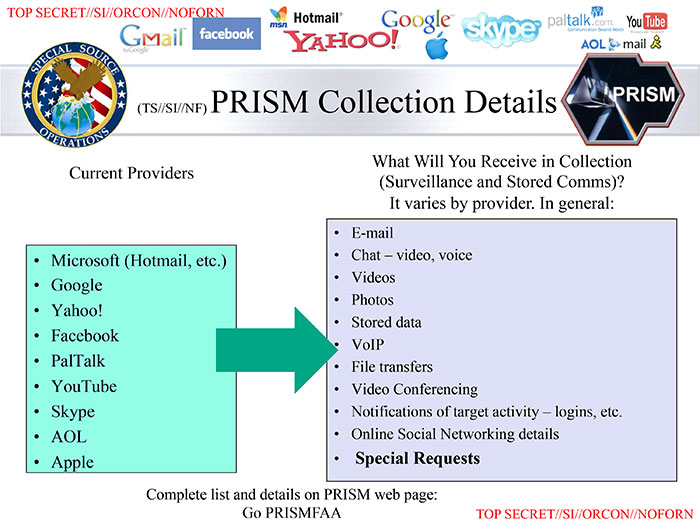|
Cyberattacks
A cyberattack is any offensive maneuver that targets computer information systems, computer networks, infrastructures, or personal computer devices. An attacker is a person or process that attempts to access data, functions, or other restricted areas of the system without authorization, potentially with malicious intent. Depending on the context, cyberattacks can be part of cyber warfare or cyberterrorism. A cyberattack can be employed by sovereign states, individuals, groups, societies or organisations and it may originate from an anonymous source. A product that facilitates a cyberattack is sometimes called a cyber weapon. Cyber attacks have increased with an alarming rate for the last few years A cyberattack may steal, alter, or destroy a specified target by hacking into a susceptible system. Cyberattacks can range from installing spyware on a personal computer to attempting to destroy the infrastructure of entire nations. Legal experts are seeking to limit the use of the t ... [...More Info...] [...Related Items...] OR: [Wikipedia] [Google] [Baidu] |
Cyberterrorism
Cyberterrorism is the use of the Internet to conduct violent acts that result in, or threaten, the loss of life or significant bodily harm, in order to achieve political or ideological gains through threat or intimidation. Acts of deliberate, large-scale disruption of computer networks, especially of personal computers attached to the Internet by means of tools such as computer viruses, computer worms, phishing, malicious software, hardware methods, programming scripts can all be forms of internet terrorism. Cyberterrorism is a controversial term. Some authors opt for a very narrow definition, relating to deployment by known terrorist organizations of disruption attacks against information systems for the primary purpose of creating alarm, panic, or physical disruption. Other authors prefer a broader definition, which includes cybercrime. Participating in a cyberattack affects the terror threat perception, even if it isn't done with a violent approach. By some definitions, it migh ... [...More Info...] [...Related Items...] OR: [Wikipedia] [Google] [Baidu] |
Cyberwarfare
Cyberwarfare is the use of cyber attacks against an enemy state, causing comparable harm to actual warfare and/or disrupting vital computer systems. Some intended outcomes could be espionage, sabotage, propaganda, manipulation or economic warfare. There is significant debate among experts regarding the definition of cyberwarfare, and even if such a thing exists. One view is that the term is a misnomer, since no cyber attacks to date could be described as war. An alternative view is that it is a suitable label for cyber attacks which cause physical damage to people and objects in the real world. Many countries including the United States, United Kingdom, Russia, China, Israel, Iran, and North Korea have active cyber capabilities for offensive and defensive operations. As states explore the use of cyber operations and combine capabilities, the likelihood of physical confrontation and violence playing out as a result of, or part of, a cyber operation is increased. However, me ... [...More Info...] [...Related Items...] OR: [Wikipedia] [Google] [Baidu] |
Cybercrimes
A cybercrime is a crime that involves a computer or a computer network.Moore, R. (2005) "Cyber crime: Investigating High-Technology Computer Crime," Cleveland, Mississippi: Anderson Publishing. The computer may have been used in committing the crime, or it may be the target. Cybercrime may harm someone's security or finances. There are many privacy concerns surrounding cybercrime when confidential information is intercepted or disclosed, lawfully or otherwise. Internationally, both governmental and non-state actors engage in cybercrimes, including espionage, financial theft, and other cross-border crimes. Cybercrimes crossing international borders and involving the actions of at least one nation-state are sometimes referred to as cyberwarfare. Warren Buffett describes cybercrime as the "number one problem with mankind" and said that cybercrime "poses real risks to humanity." A 2014 report sponsored by McAfee estimated that cybercrime resulted in $445 billion in annual dama ... [...More Info...] [...Related Items...] OR: [Wikipedia] [Google] [Baidu] |
Computer Information Systems
An information system (IS) is a formal, sociotechnical, organizational system designed to collect, process, store, and distribute information. From a sociotechnical perspective, information systems are composed by four components: task, people, structure (or roles), and technology. Information systems can be defined as an integration of components for collection, storage and processing of data of which the data is used to provide information, contribute to knowledge as well as digital products that facilitate decision making. A computer information system is a system that is composed of people and computers that processes or interprets information. The term is also sometimes used to simply refer to a computer system with software installed. "Information systems" is also an academic field study about systems with a specific reference to information and the complementary networks of computer hardware and software that people and organizations use to collect, filter, process, cre ... [...More Info...] [...Related Items...] OR: [Wikipedia] [Google] [Baidu] |
Nova Science Publishers, Inc
A nova (plural novae or novas) is a transient astronomical event that causes the sudden appearance of a bright, apparently "new" star (hence the name "nova", which is Latin for "new") that slowly fades over weeks or months. Causes of the dramatic appearance of a nova vary, depending on the circumstances of the two progenitor stars. All observed novae involve white dwarfs in close binary systems. The main sub-classes of novae are classical novae, recurrent novae (RNe), and dwarf novae. They are all considered to be cataclysmic variable stars. Classical nova eruptions are the most common type. They are likely created in a close binary star system consisting of a white dwarf and either a main sequence, subgiant, or red giant star. When the orbital period falls in the range of several days to one day, the white dwarf is close enough to its companion star to start drawing accreted matter onto the surface of the white dwarf, which creates a dense but shallow atmosphere. This atmos ... [...More Info...] [...Related Items...] OR: [Wikipedia] [Google] [Baidu] |
Security Policy
Security policy is a definition of what it means to ''be secure'' for a system, organization or other entity. For an organization, it addresses the constraints on behavior of its members as well as constraints imposed on adversaries by mechanisms such as doors, locks, keys and walls. For systems, the security policy addresses constraints on functions and flow among them, constraints on access by external systems and adversaries including programs and access to data by people. Significance If it is important to be secure, then it is important to be sure all of the security policy is enforced by mechanisms that are strong. There are organized methodologies and risk assessment strategies to assure completeness of security policies and assure that they are completely enforced. In complex systems, such as information systems, policies can be decomposed into sub-policies to facilitate the allocation of security mechanisms to enforce sub-policies. However, this practice has pitfalls. ... [...More Info...] [...Related Items...] OR: [Wikipedia] [Google] [Baidu] |
Committee On National Security Systems
The Committee on National Security Systems (CNSS) is a United States intergovernmental organization that sets policy for the security of the US security systems. Charter, mission, and leadership The National Security Telecommunications and Information Systems Security Committee (NSTISSC) was established under National Security Directive 42, "National Policy for the Security of National Security Telecommunications and Information Systems", dated 5 July 1990. On October 16, 2001, President George W. Bush signed Executive Order 13231, the Critical Infrastructure Protection in the Information Age, re-designating the National Security Telecommunications and Information Systems Security Committee (NSTISSC) as the Committee on National Security Systems. The CNSS holds discussions of policy issues, sets national policy, directions, operational procedures, and guidance for the information systems operated by the U.S. Government, its contractors or agents that either contain classified i ... [...More Info...] [...Related Items...] OR: [Wikipedia] [Google] [Baidu] |
Ransomware
Ransomware is a type of malware from cryptovirology that threatens to publish the victim's personal data or permanently block access to it unless a ransom is paid off. While some simple ransomware may lock the system without damaging any files, more advanced malware uses a technique called cryptoviral extortion. It encrypts the victim's files, making them inaccessible, and demands a ransom payment to decrypt them. In a properly implemented cryptoviral extortion attack, recovering the files without the decryption key is an intractable problem – and difficult to trace digital currencies such as paysafecard or Bitcoin and other cryptocurrencies are used for the ransoms, making tracing and prosecuting the perpetrators difficult. Ransomware attacks are typically carried out using a Trojan disguised as a legitimate file that the user is tricked into downloading or opening when it arrives as an email attachment. However, one high-profile example, the WannaCry worm, traveled au ... [...More Info...] [...Related Items...] OR: [Wikipedia] [Google] [Baidu] |
Cyber Campaign
{{Short pages monitor ... [...More Info...] [...Related Items...] OR: [Wikipedia] [Google] [Baidu] |
Telephone Tapping
Telephone tapping (also wire tapping or wiretapping in American English) is the monitoring of telephone and Internet-based conversations by a third party, often by covert means. The wire tap received its name because, historically, the monitoring connection was an actual electrical tap on the telephone line. Legal wiretapping by a government agency is also called lawful interception. Passive wiretapping monitors or records the traffic, while active wiretapping alters or otherwise affects it. Legal status Lawful interception is officially strictly controlled in many countries to safeguard privacy; this is the case in all liberal democracies. In theory, telephone tapping often needs to be authorized by a court, and is again in theory, normally only approved when evidence shows it is not possible to detect criminal or subversive activity in less intrusive ways. Oftentimes, the law and regulations require that the crime investigated must be at least of a certain severity. Illegal ... [...More Info...] [...Related Items...] OR: [Wikipedia] [Google] [Baidu] |
Passive Attack
A passive attack on a cryptosystem is one in which the cryptanalyst cannot interact with any of the parties involved, attempting to break the system solely based upon observed data (i.e. the ciphertext). This can also include known plaintext attacks where both the plaintext and its corresponding ciphertext are known. While active attackers can interact with the parties by sending data, a passive attacker is limited to intercepting communications (eavesdropping), and seeks to decrypt data by interpreting the transcripts of authentication sessions. Since passive attackers do not introduce data of their own, they can be difficult to detect. While most classical ciphers are vulnerable to this form of attack, most modern ciphers are designed to prevent this type of attack above all others. Attributes *Traffic analysis *Non-evasive eavesdropping and monitoring of transmissions *Because data unaffected, tricky to detect *Emphasis on prevention (encryption) not detection *Sometimes ref ... [...More Info...] [...Related Items...] OR: [Wikipedia] [Google] [Baidu] |
Threat (computer)
In computer security, a threat is a potential negative action or event facilitated by a vulnerability that results in an unwanted impact to a computer system or application. A threat can be either a negative "intentional" event (i.e. hacking: an individual cracker or a criminal organization) or an "accidental" negative event (e.g. the possibility of a computer malfunctioning, or the possibility of a natural disaster event such as an earthquake, a fire, or a tornado) or otherwise a circumstance, capability, action, or event.Internet Engineering Task Force RFC 2828 Internet Security Glossary This is differentiated from a threat actor who is an individual or group that can perform the threat action, such as exploiting a vulnerability to actualise a negative impact. A more comprehensive definition, tied to an Information assurance point of view, can be found in "''Federal Information Processing Standards (FIPS) 200, Minimum Security Requirements for Federal Information and Inform ... [...More Info...] [...Related Items...] OR: [Wikipedia] [Google] [Baidu] |






